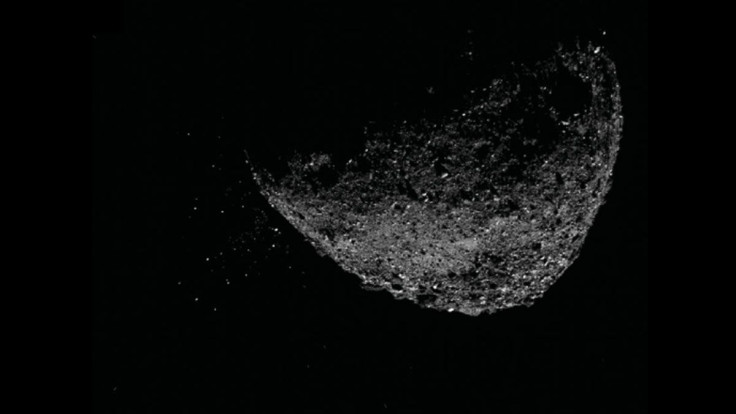OSIRIS-Rex Team Explains Why Asteroid Bennu Is Ejecting Particles

The OSIRIS-Rex mission’s science team observed something rather odd about asteroid Bennu just a week after the spacecraft entered its first orbit around the asteroid. At first, the images appeared as though there were stars behind asteroid Bennu but, upon closer inspection, the team discovered that asteroid Bennu was actually ejecting particles from its surface and into space.
The team has since observed the three largest particle ejection events on Jan. 6, which was the first observation, Jan. 19 and Feb. 11. According to the team, the ejection events originated from different parts of Bennu’s surface, with the first coming from the southern hemisphere, and the second and third from the equator.
The particles ejected by Bennu varied in size from smaller than an inch to 4 inches, and travel at speeds of 10 feet per second. Upon further investigation, the team also observed that the particles either escaped into space of briefly orbited Bennu for a few days before landing back on its surface.
As such, Bennu is now considered an “active” asteroid, which means that it loses mass. Before the OSIRIS-Rex detections, scientists had no idea that asteroid Bennu could eject debris.
But, why is Bennu chucking particles into space?
Writing in a new paper published in the journal Science, the team explains three possible explanations for the mysterious particle ejections: meteorite impacts, thermal stress fracturing and the release of water vapor.
The team explains that it is possible that small meteoroid impacts are occurring in Bennu where OSIRIS-Rex cannot observe it, and the spacecraft only gets to capture the particle ejections that result in the impact.
However, thermal stress fracturing may also explain the ejections. This is because nights are extremely cold in Bennu but the temperature drastically changes in the afternoon. When the sudden change happens, it could cause the rocks to crack and particles to be ejected from the surface. As it happens, all three large ejections occurred in mid-afternoon on Bennu.
The third possible explanation for the ejections, water release, could occur if the water-locked clays are heated and the water begins to cause pressure. As the pressure builds in cracks and pores, the surface may become agitated and cause the particles to erupt.
According the the team, it is possible that more than one of the three possible explanations are really causing the ejections. For instance, the thermal fracturing might be making it easier for particles to launch when meteoroids hit the surface.
If this is the case and thermal fracturing and meteoroid impacts are, indeed, causing the ejections, then it is possible that the phenomenon is happening on all small asteroids. However, if water release is causing the ejections, the phenomenon would then be restricted to asteroids carrying water-bearing minerals.
For now, the team is hoping that particle samples brought back to Earth from Bennu would give more insight as to what is really causing the ejections, and help shed more light into our understanding of asteroids.
The sample collection is scheduled for summer 2020, but the samples won’t be back on Earth until September 2023.
“Among Bennu's many surprises, the particle ejections sparked our curiosity, and we've spent the last several months investigating this mystery,” OSIRIS-Rex principal investigator Dante Lauretta said. “This is a great opportunity to expand our knowledge of how asteroids behave.”
© Copyright IBTimes 2024. All rights reserved.






















